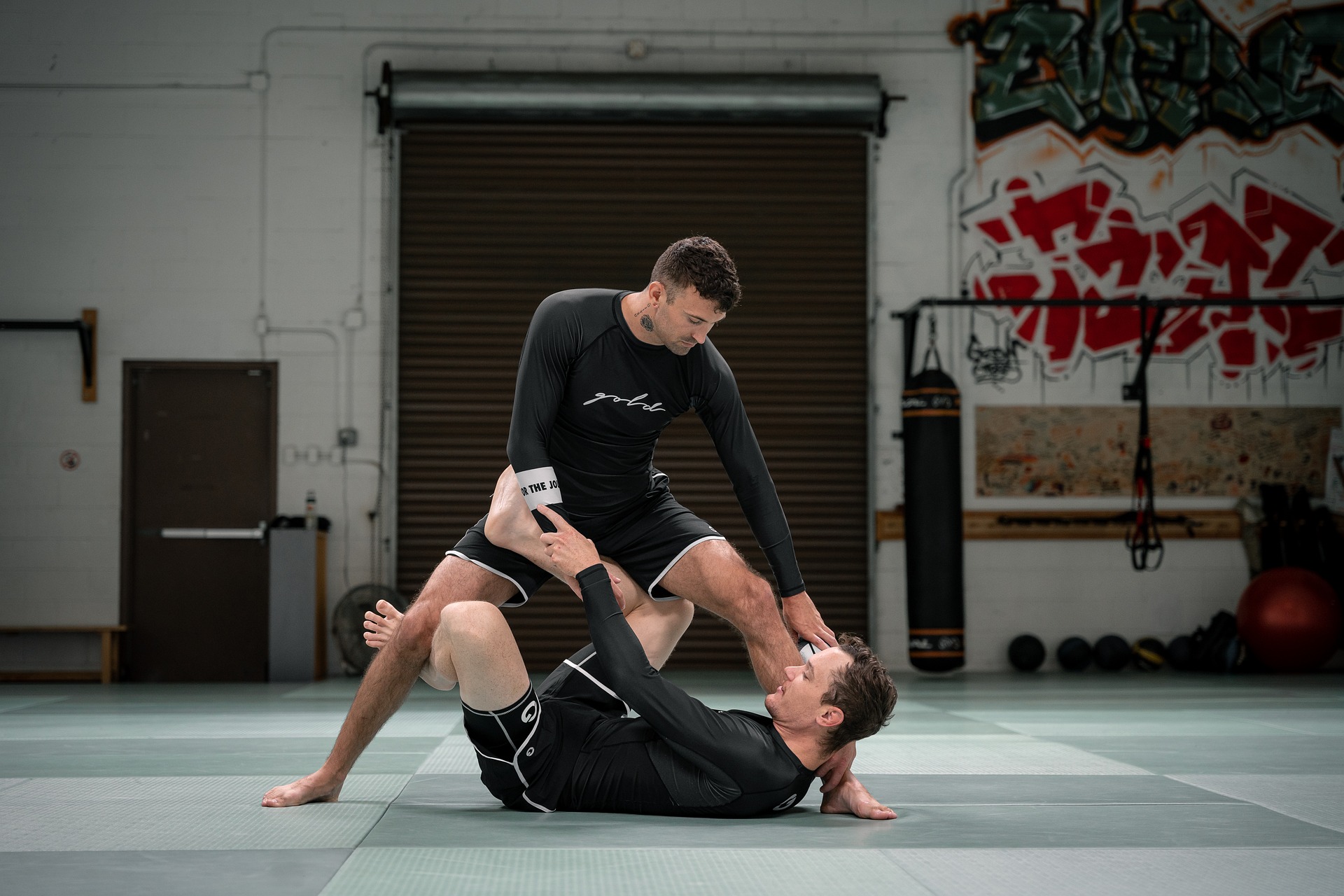The Growing Popularity of Brazilian Jiu-Jitsu in the U.S.
Brazilian Jiu-Jitsu (BJJ) has seen a remarkable rise in popularity across the United States in recent years, appealing to everyone from elite athletes to everyday fitness enthusiasts. This martial art emphasizes technique over brute strength, making it accessible to a wide audience. What’s behind the BJJ surge, and why is it becoming such a compelling option for fitness and self-defense? Read below to learn more.
What Makes Brazilian Jiu-Jitsu Unique?
Brazilian Jiu-Jitsu is a grappling-based martial art that focuses on submissions and positional control rather than striking or kicking. Unlike many martial arts that emphasize stand-up techniques, BJJ takes the fight to the ground, allowing a smaller, weaker person to defend themselves against a stronger opponent using leverage, body mechanics, and skill. This aspect makes it especially attractive for individuals seeking self-defense training without having to rely on brute force.
One of the main appeals of BJJ is that it’s a thinking person’s sport, often referred to as “human chess.” Practitioners must outmaneuver their opponents through strategy and anticipation, making it as much a mental challenge as a physical one. The sport also offers a unique level of safety, as sparring in BJJ can be done at full intensity without the risks associated with striking sports like boxing or Muay Thai.
The Fitness Benefits: Why Athletes Are Turning to BJJ
While Brazilian Jiu-Jitsu is primarily known for its self-defense applications, its fitness benefits are undeniable. More athletes, from football players to CrossFit enthusiasts, are incorporating BJJ into their training regimens. BJJ offers a full-body workout that improves strength, flexibility, endurance, and cardiovascular health. Rolling (sparring) sessions can be especially taxing, engaging nearly every muscle in the body.
One of the most significant fitness benefits is the sport’s focus on core strength and functional movement. Because BJJ requires practitioners to transition between different positions, hold their opponents down, or escape unfavorable positions, it constantly engages the core muscles. Additionally, it promotes overall mobility and flexibility, which are vital for injury prevention, making it a well-rounded form of exercise for people of all ages and fitness levels.
Many athletes also find that BJJ provides a mental and emotional outlet, helping them manage stress and focus their energy in a productive way. The discipline and structure of regular training sessions encourage personal growth, persistence, and self-confidence, which translate to other areas of life.
The Influence of UFC and Mixed Martial Arts
The rise of Brazilian Jiu-Jitsu in the U.S. is deeply tied to the popularity of the Ultimate Fighting Championship (UFC) and the broader world of mixed martial arts (MMA). BJJ was thrust into the spotlight during the early days of the UFC in the 1990s when Royce Gracie, a relatively small Brazilian fighter, dominated much larger and stronger opponents using Jiu-Jitsu techniques. His success demonstrated the effectiveness of BJJ in real combat situations, making it a foundational skill for any aspiring MMA fighter.
Since then, nearly all MMA fighters incorporate BJJ into their training, and the sport’s visibility has skyrocketed as a result. The UFC’s global reach has introduced millions of viewers to the techniques and philosophies of BJJ, inspiring many to try it themselves. Gyms across the U.S. now offer BJJ classes alongside traditional martial arts, capitalizing on the demand created by MMA’s explosion in popularity.
Additionally, the success of high-profile fighters like Demian Maia and Charles Oliveira, who have showcased world-class BJJ in the octagon, has further fueled interest. The sport’s influence in MMA has cemented its reputation as one of the most effective forms of self-defense and combat.
The Community Aspect: A Culture of Respect and Camaraderie
One of the most compelling aspects of Brazilian Jiu-Jitsu is the strong sense of community it fosters. BJJ schools (often called “academies”) are known for promoting a culture of respect, discipline, and camaraderie. Unlike many other sports, BJJ emphasizes the importance of learning from training partners, regardless of their skill level. This creates a collaborative environment where practitioners help each other improve.
At BJJ academies, everyone from beginners to seasoned black belts trains together, fostering mutual respect. The belt system, which ranges from white to black, gives students a tangible way to measure progress, but it also encourages humility. Even experienced practitioners regularly face defeat in sparring sessions, teaching them the value of perseverance and continuous learning.
The sense of belonging that BJJ offers is a major reason why so many people stick with the sport long-term. It’s not just about getting in shape or learning self-defense— it’s about being part of a supportive community that helps each other grow, both on and off the mat.
BJJ as a Lifelong Journey: Beyond the Physical
For many practitioners, Brazilian Jiu-Jitsu becomes more than just a sport; it’s a lifelong journey of self-improvement. The sport’s complexity means there’s always something new to learn, whether it’s refining a technique or mastering a new submission. Many black belts talk about BJJ as a lifestyle, one that encourages mental toughness, patience, and resilience.
The lessons learned on the mat—about overcoming adversity, staying calm under pressure, and continually seeking improvement—are often applicable to life outside the gym. The sport teaches practitioners how to deal with failure constructively, how to problem-solve on the fly, and how to work towards long-term goals. As a result, many people find that BJJ not only improves their physical fitness but also enhances their mental well-being and overall approach to challenges.
This unique blend of physical, mental, and emotional growth keeps people engaged with the sport for years, with many practitioners continuing to train well into their 50s and beyond.
Useful Tips and Facts
- Brazilian Jiu-Jitsu was adapted from traditional Japanese Jiu-Jitsu and Judo in the early 20th century.
- BJJ is ideal for self-defense, as it focuses on techniques that neutralize larger and stronger attackers.
- Rolling (sparring) sessions are a low-impact way to practice combat at full intensity.
- BJJ emphasizes leverage, making it possible for smaller individuals to defeat larger opponents.
- Unlike striking sports, BJJ allows practitioners to spar safely without causing long-term injuries.
- Many gyms now offer “no-gi” BJJ, which is practiced without the traditional kimono-like gi uniform, resembling more of an MMA style.
Conclusion
Brazilian Jiu-Jitsu’s rise in the U.S. is a testament to its effectiveness, versatility, and accessibility. From its self-defense applications to its physical and mental benefits, BJJ offers something for everyone, regardless of age or athletic background. With a growing community, increasing visibility in MMA, and its appeal as both a fitness and lifestyle practice, BJJ has firmly established itself as a key player in the modern sports landscape. Whether you’re looking for a way to stay in shape, learn self-defense, or challenge yourself mentally, BJJ is a journey worth taking.







